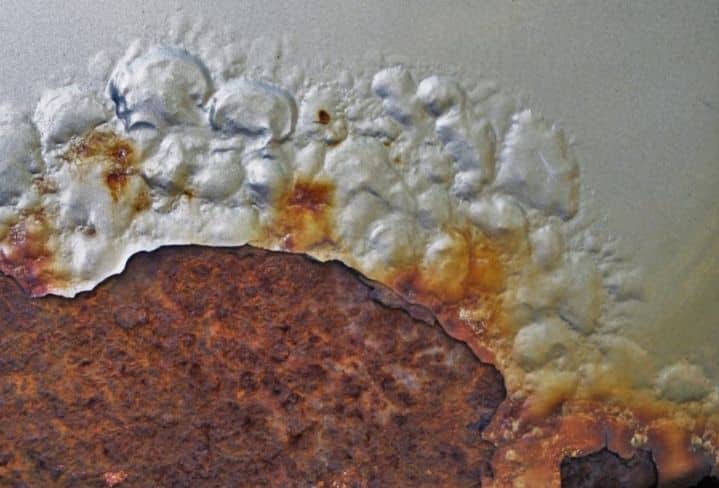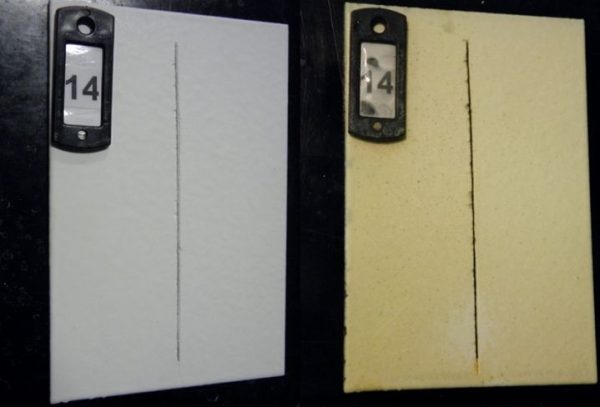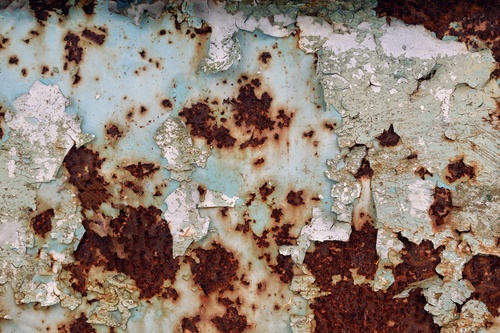We at EonCoat understand the importance of corrosion prevention. Rust and other corrosion forms can lead to safety issues and ruin the integrity of your equipment and supplies. Even routine maintenance to remove and repair corrosion can drive up costs. Fortunately, there are a variety of measures you can take to minimize corrosion. Here we’ll highlight five methods based on cost and effectiveness.
1. BARRIER COATINGS
One of the easiest and cheapest ways to prevent corrosion is to use barrier coatings like paint, plastic, or powder. Powders, including epoxy, nylon, and urethane, adhere to the metal surface to create a thin film. Plastic and waxes are often sprayed onto metal surfaces. Paint acts as a coating to protect the metal surface from the electrochemical charge that comes from corrosive compounds. Today’s paint systems are a combination of different paint layers that serve different functions. The primer coat acts as an inhibitor, the intermediate coat adds to the paint’s overall thickness, and the finish coat provides resistance to environmental factors.
The biggest drawback with coatings is that they often need to be stripped and reapplied. Coatings that aren’t applied properly can quickly fail and lead to increased levels of corrosion. Coatings contain volatile organic compounds, which make them hazardous to people and the environment.

2. HOT-DIP GALVANIZATION
This corrosion prevention method involves dipping steel into molten zinc. The iron in the steel reacts with the zinc to create a tightly bonded alloy coating which serves as protection. The process has been around for more than 250 years and has been used for corrosion protection of things like artistic sculptures and playground equipment.
Unfortunately, galvanization can’t be done on-site, meaning companies must pull equipment out of work to be treated. Some equipment may simply be too large for the process, forcing companies to abandon the idea altogether. In addition, zinc can chip or peel. And high exposure to environmental elements can speed up the process of zinc wear, leading to increased maintenance. Lastly, the zinc fumes that release from the galvanizing process are highly toxic.
3. ALLOYED STEEL (STAINLESS)
Alloyed steel is one of the most effective corrosion prevention methods around, combining the properties of various metals to provide added strength and resistance to the resulting product. Corrosion-resistant nickel, for example, combined with oxidation-resistant chromium results in an alloy that can be used in oxidized and reduced chemical environments. Different alloys provide resistance to different conditions, giving companies greater flexibility.
Despite its effectiveness, alloyed steel is very expensive.
4. CATHODIC PROTECTION
Cathodic protection protects by electrochemical means. To prevent corrosion, the active sites on the metal surface are converted to passive sites by providing electrons from another source, typically with galvanic anodes attached on or near the surface. Metals used for anodes include aluminum, magnesium, or zinc.
While cathodic protection is highly effective, anodes get used up and need to be checked and/or replaced often which can drive up costs of maintenance. They also increase the weight of the attached structure and aren’t always effective in high-resistivity environments.

5. EONCOAT – A NEW WAY TO PROTECT ASSETS FROM CORROSION
Choosing the right corrosion prevention for your equipment isn’t easy. Each of the above methods has its pros and cons. EonCoat is a cost-effective, maintenance-free, and easily applied solution which protects the life of the asset. It works by a combination of the above methods. First, it alloys the metal, then provides a thick layer of inhibitors that will repair any damage to the alloy layer. EonCoat uses no toxic chemicals and has no VOC’s so it is the most environmentally friendly solution. Independent testing shows this solution to be the most effective and long-lasting of all the alternatives. The 30-year warranty ensures your equipment stays protected. To Learn More about EonCoat download our FREE EonCoat E-Book & take our FREE 5-email crash course.


Ready to Learn More About EonCoat?




Comments are closed.